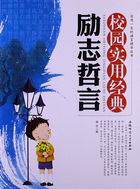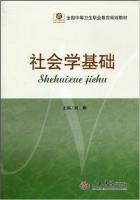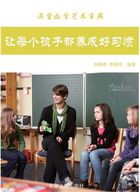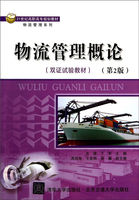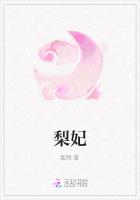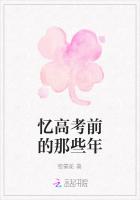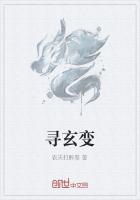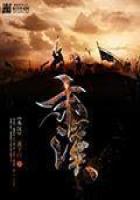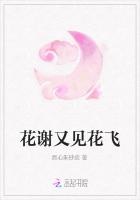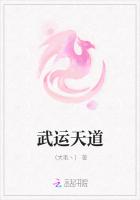Step5:Assignm ent
1.Daily reporter shows som epictures of various kinds of pollutionw hich they searched from the Internet to the other students to arousetheir aw areness of environm ental protection and then ask the otherstudents what have caused those environm ental problem sin groups.
Q1:What problem sare we facing now?
Q2:What have caused those problem s?
2.Daily reporter shows som eadvanced and im aginative inventions tothe students,and tries to arouse their im agination to design specificobjects for abetter future life.
3.Assignm ent:Object‐designing
Design an object which can help you change the world for abetterfuture.
通过角色扮演以及情景设置引出未来生活中将会存在的问题,现在生活中存在的问题,由此自然地引出阅读课的任务——发明设计,以此激发学生的发明创造能力,唤醒学生保护自然、爱护环境的意识,学习中渗透道德教育。
(浙江省苍南县矾山高级中学 陈春丽)
点评
本教学设计既充分地考虑到学生英语学习的实际,又符合新课标的要求。从设计者目标和教学过程的设计中可以窥见英语阅读既是语言结构事件,又是意义和心理事件。本设计体现了词汇的习得、语言知识的获取和语言技能的生成是阅读的基础,动机的激发是英语课堂阅读教学引入的条件,语义的建构是阅读的归宿。设计者对教材的内容和语言知识进行了科学的梳理和重构,使语言结构习得变得简单,使教学内容变得丰富,使学生学得有效。这从Greetings and Lead‐in 的教学步骤中可见一斑。但设计者在S tep 6.Form ative E valuation 中提问的形式单一,问题设计与呈现未能按难度大小依次进行。
十、初步英语读写能力的教学
一、教学设计思路
整体的教学围绕培养高中生科学研究所需的初步英语读写能力、发展综合语言运用能力展开。采用多媒体辅助教学,以此来创设良好的教学情景,优化教学过程,促进学生思考。采用教师指导下的发现式学习,启发学生自主理解文本内容,探究、领悟文本的语言特点与篇章结构,促进学生语言实际运用能力的提高。组织学生以四人小组为单位做辩论前的准备,在准备过程中,学生能共同探究,互相帮助,共同进步。通过合理的作业布置引导学生课外自主学习,综合运用语言。整个教学流程力求做到由浅入深,紧密相连,以利于启发学生思维、主动建构知识,在读、说和写的活动中发展综合的语言运用能力。
二、前期分析
英语的学术目的(EAP)是英语学习的重要目的之一,英语是从事科学研究的重要工具之一。高中阶段的英语教学应该为学生进入大学参与科研,读英文学术文献,用英语写研究报告奠定基础。本单元综合技能的阅读部分主要是三位科学家(达尔文,格雷戈·门德尔和杜尔松)关于物种的研究以及研究成果的介绍。文章的语言和内容很适合于培养学生科学研究的初步英语读写能力。本节课的学习任务是在理解文章的基础上,学生能初步形成读写英语学术文章的能力。
通过前一课阅读文章的学习(也是一篇学术文章),学生对学术文章写作的特点已有一定的认知基础,已基本能根据学术文章的特点进行阅读。但是学生如何吸收学术文章中的常用语言,并把所吸收的语言运用起来还有一定的难度。
教学重点:
1.熟悉学术文章的写作特点,形成该类文章的阅读技能;
2.理解句子之间及段落之间的逻辑关系,形成良好的语篇分析、理解能力;
3.领悟、运用篇章组织手段进行读写的能力。
教学难点:
1.领悟并运用篇章组织手段进行读写训练;
2.综合所学的语言材料写一篇简单的科普文章。
三、教学目标
【知识与技能】
1.能快速辨认出表述研究方法、研究内容及研究成果的用语,能知道句子之间及段落之间的逻辑关系,形成良好的语篇分析、理解能力。
2.能写出与科研有一定关系的文章。
3.知道利用网络等手段获得更广泛的英语信息,扩展所学的知识。
【过程与方法】
通过阅读的过程,体会学术文章的写作特点。
【情感、态度与价值观】
形成探究自然与社会的兴趣。
四、教学准备
1.多媒体课件
2.课前,让学生阅读从网上下载的一篇题为“Roles of Genes inShaping Intelligence Is Lifelong,Study Says”(研究指出,基因对人的智力有终身影响)的研究报道和一篇题为“Heredity and Hereditarianism ”(遗传与遗传论)的学术文章(见附录),让学生对该类文章有一定的感性认识,奠定课堂学习的基础。
五、教学过程设计
Step1:Lead‐in (2m inutes)
1.Revise the contributionsm ade by the three scientists in the previousreading passage.
2.Nam esom eother scientists whom ade great contributions to thescience of biology.
由复习导入新课,使新的学习能建立在学生已有知识的基础上。因为这是综合技能训练课,学生既要完成读的任务又要完成其他综合性语言运用任务,所以导入设计相对一般的阅读课简洁。
Step2:Reading (16m inutes)
1.Prediction and scanning
(1) Look at the title and guess who will be the scientists mentionedin the passage?
(2) Read fast and answ er:W hat are the possible relations betw eenthe title and these scientists?
承接学生对导入问题2的回答,引导学生对课文内容进行预测,以调动学生已有的认知结构参与阅读,产生阅读的欲望,快速进入阅读状态。
然后通过快速阅读来验证自己的预测,这样可使学生处于一种主动的认知状态。
2.Skim ming
Q1.Can you use asentence to sum up the m ain idea of the wholepassage?(The text is about the researches of 3scientists and the resultsor findings of these researches.)
Q2.What are these researches about?
Q3.What are the results or findings of these researches?
Q4.How can we get aclearer picture about the detailed inform ation?(Using table or chart to reorganize the in form ation.)
该教学步骤旨在培养学生的归纳概括能力,同时也为下一步细读课文确定一个阅读的框架。问题4的目的是提高学生对信息处理方式的认识,让学生学会通过图表等方式来有效地组织信息,提高学生的信息处理能力。
3.Detailed reading
(1)Read and note dow nsom ekey words in atable.
用表格呈现文章细节使文章意思具体化、简约化、系统化,这有利于训练学生查找关键词的阅读技能和策略,也有利于发展和完善他们的认知思维能力。
4.Discussion
(1) Discuss words and expressions that are com monly used inresearch papers.
①Underline the expressions used to describe a scientist’sresearchor experim ent.
②Mark the expressions that are used to present research resultsw ith dots.
③Can you think of som esim ilar expressions?(conclude/conclusion;reveal; carry out ex perim ent; investigation; discover; dem onstrate;findings;test and so on)
在理解的基础上,讨论文章的语言特点有助于学生熟悉该类文章的特点,掌握该类文章的阅读技巧。学生自主用符号标注出该类研究文章中常用的表达法,然后师生共同讨论文章的语言特点并用Pow erP oint演示讨论结果。最后,引导学生总结归纳所学的该类研究文章中常用的一些表达法。整个过程学生处于主动的知识建构之中,学生是知识主动的发现者,而不是被动的接受者。这样得来的知识能为学生综合语言运用服务,为下面补充阅读材料的讨论、辩论及写作活动服务,对学生终身发展有用,奠定学生良好的科研文章英语读写基础。
(2) Discuss the structure of the whole passage.
①How is the whole passage closely connected?
①Make an in‐depth analysis of the fifth paragraph.
Q1. What’sthe function of the fifth paragraph in the w holepassage?
Q2.How do you know?(thesignal words :“Asa resulto f”(承上);“next generation”(启下)
Q3.What’sthe relation betw een the first and second sentence?Arethey parallelor contrasting?What’sthe meaning of the discourse marker“Still”here?
Q4.What’sthe relation betw een the second and third sentence?
What’sthe signal word?
Q5.What’sthe relation betw een the third and the last sentence?
讨论全文以及过渡段的篇章结构可以帮助学生理清文章脉络,熟悉一些常用的篇章连接手段,培养学生语篇的领悟、分析能力。一系列问题的使用可以从语意上和话语标志上启发学生积极思考,认真探究、领悟句与句之间以及段落与段落之间的逻辑关系,从而使学生形成利用话语标志正确理解文章内容的能力,树立学生在写作中运用话语标志等连接手段使文章更连贯的意识。
(3)Sum up the m ain contents of the passage by answ ering anddiscussing the follow ing questions.
Q1.What are the great contributions of the three scientists?
Q2.Why can they make such great contributions?
Q3. What plays am ore im portant role in their success, theirheredity (genetics) or environm ent?
小结文章的内容旨在挖掘文章的情感因素,激发学生探究自然与社会的兴趣。这也可以激起学生对讨论补充阅读材料的兴趣,实现向下一教学步骤的顺利过渡。
Step3:Supplem entary reading (13minutes)
1.Discuss the supplem entary reading passages handed out before thelesson.
讨论课前补充阅读材料的目的是为小组辩论和写作埋下伏笔,为综合语言运用奠定内容、语言和连接词运用的基础。
(1)Reading m aterial one :
①Underline words or expressions in the passage that tell us aboutthe study or result(s) of the study.

